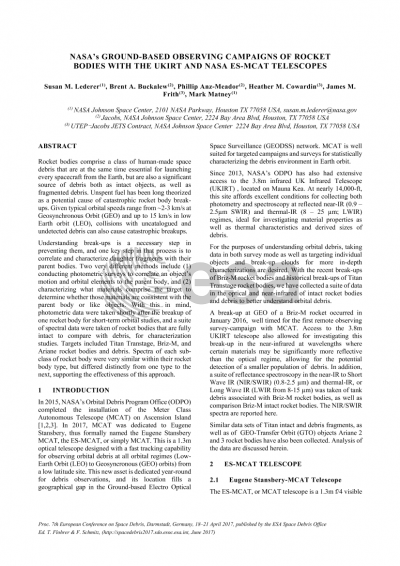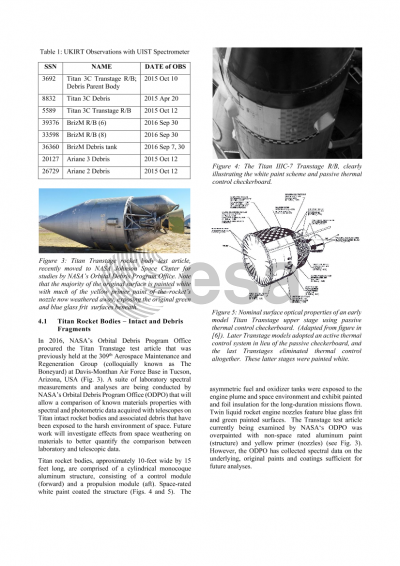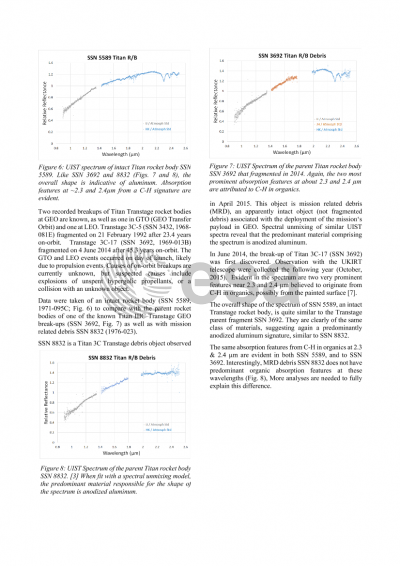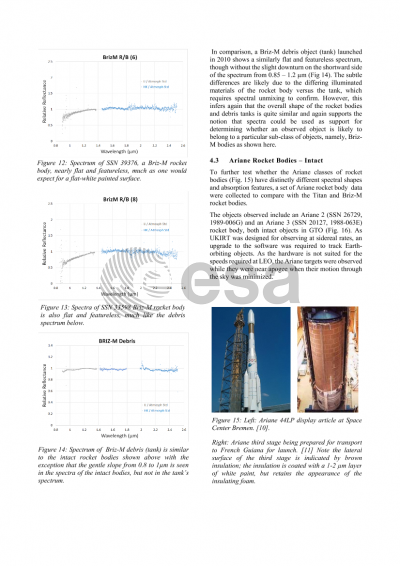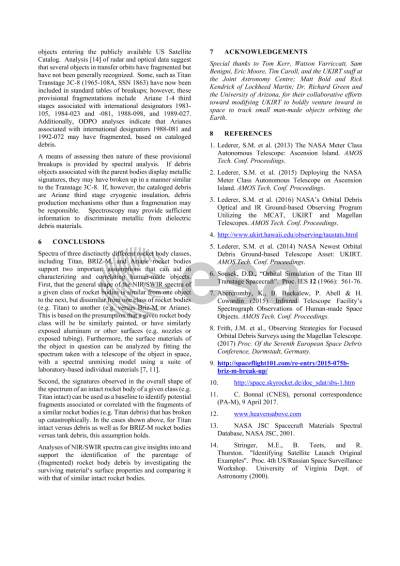Document details

Abstract
In 2015, NASA’s Orbital Debris Program Office (ODPO) completed the installation of the Meter Class Autonomous Telescope (MCAT) on Ascension Island. MCAT is a 1.3m optical telescope designed with a fast tracking capability for observing orbital debris at all orbital regimes (Low-Earth Orbits (LEO) to Geosyncronous (GEO) orbits) from a low latitude site. This new asset is dedicated year-round for debris observations, and its location fills a geographical gap in the Ground-based Electro Optical Space Surveillance (GEODSS) network. A commercial off the shelf (COTS) research grade 0.4m telescope (named the Benbrook telescope) will also be installed on Ascension in early 2017. This smaller version is controlled by the same master software, designed by Euclid Research, and can be tasked to work independently or in concert with MCAT. Like MCAT, it has a the same suite of filters, a similar field of view, and a fast-tracking mount, and is also capable of tracking debris at all orbital regimes. These assets are well suited for targeted campaigns or surveys of debris.
Since 2013, NASA’s ODPO has also had extensive access to the 3.8m infrared UK Infrared Telescope (UKIRT) , located on Mauna Kea. At nearly 14,000-ft, this site affords excellent conditions for collecting both photometry and spectroscopy at near-IR (0.9 – 2.5µm SWIR) and thermal-IR (8 – 25 µm; LWIR) regimes, ideal for investigating material properties as well as thermal characteristics and derived sizes of debris.
For the purposes of understanding orbital debris, taking data in both survey mode as well as targeting individual objects and break-up clouds for more in-depth characterizations are desired. With the recent break-ups of Briz-M rocket bodies, we have collected a suite of data in the optical, near-infrared, and mid-infrared of intact objects, primarily focused on orbital debris. A break-up at GEO of a Briz-M rocket occurred in January 2016, well timed for the first remote observing survey-campaign with MCAT. Access to the 3.8m UKIRT telescope has also allowed for investigating this break-up in the near-infrared at wavelengths where in some cases materials comprising the debris can be significantly more reflective than the optical, allowing for the potential detection of a smaller population of debris. In addition, a suite of near-IR reflectance spectroscopy (0.8-2.5 µm) and thermal-IR (8-15 µm) of individual intact and debris associated with Briz-M fragmentation have been collected. Analysis of the targeted survey data will be discussed.
Preview
